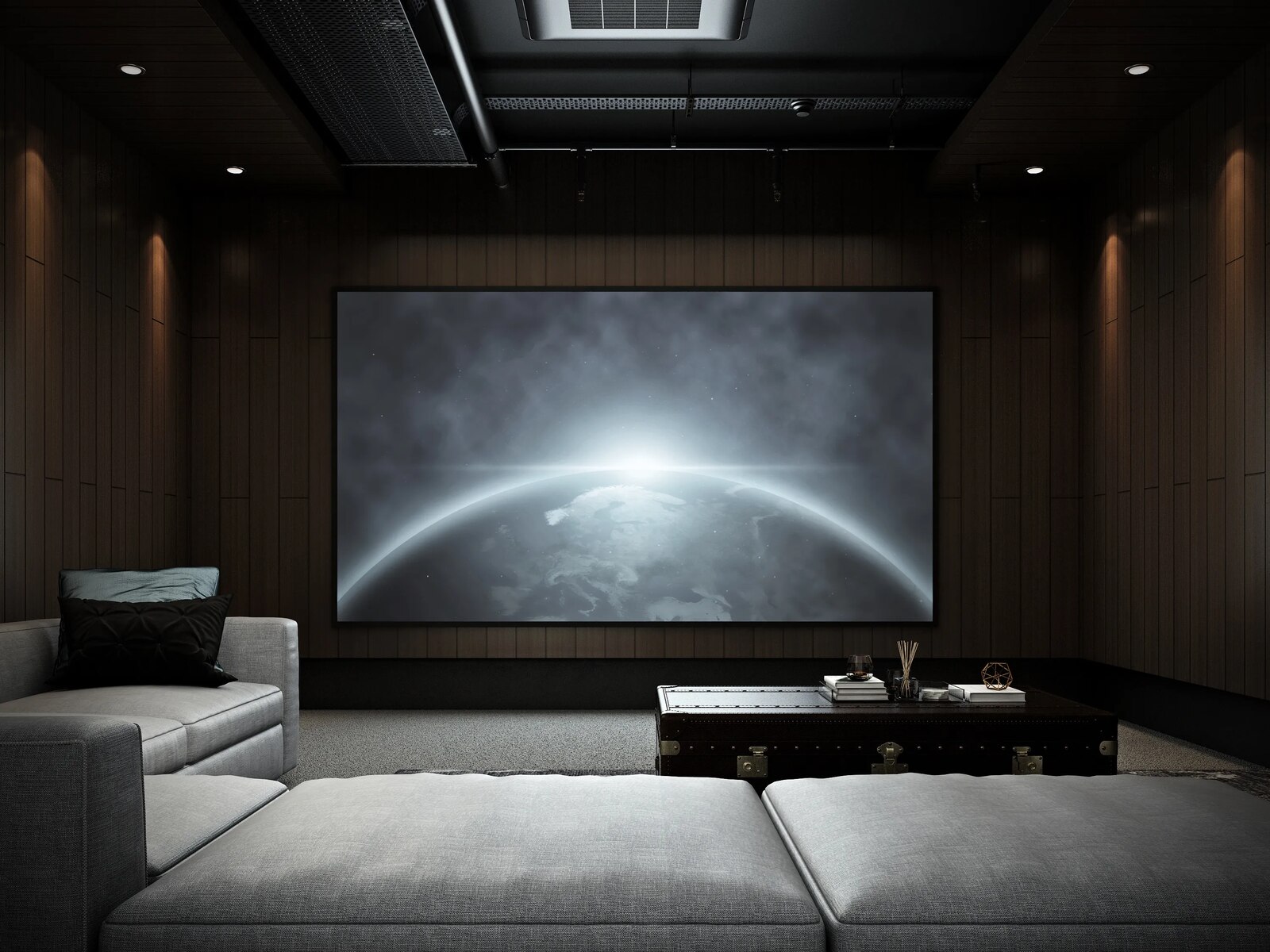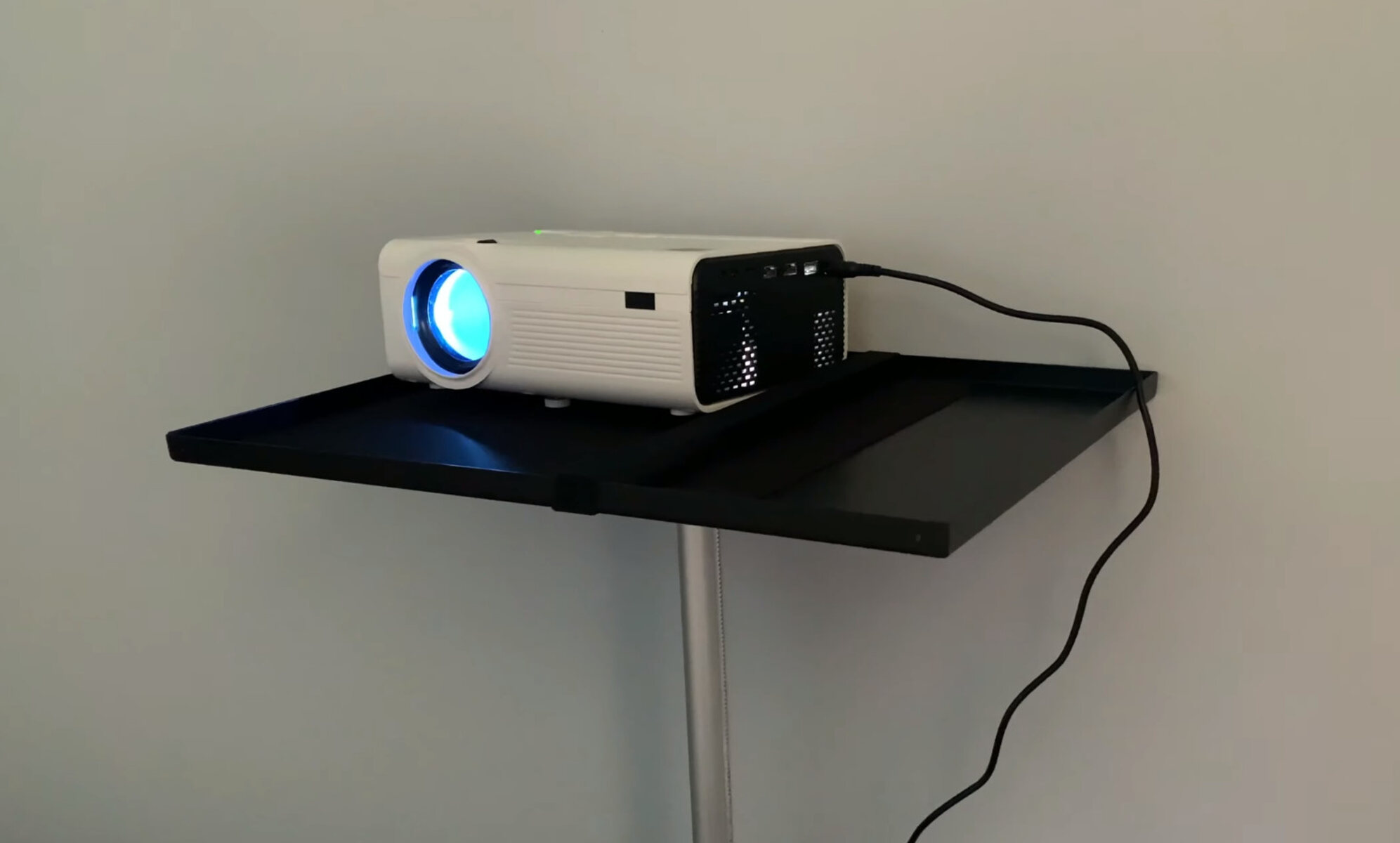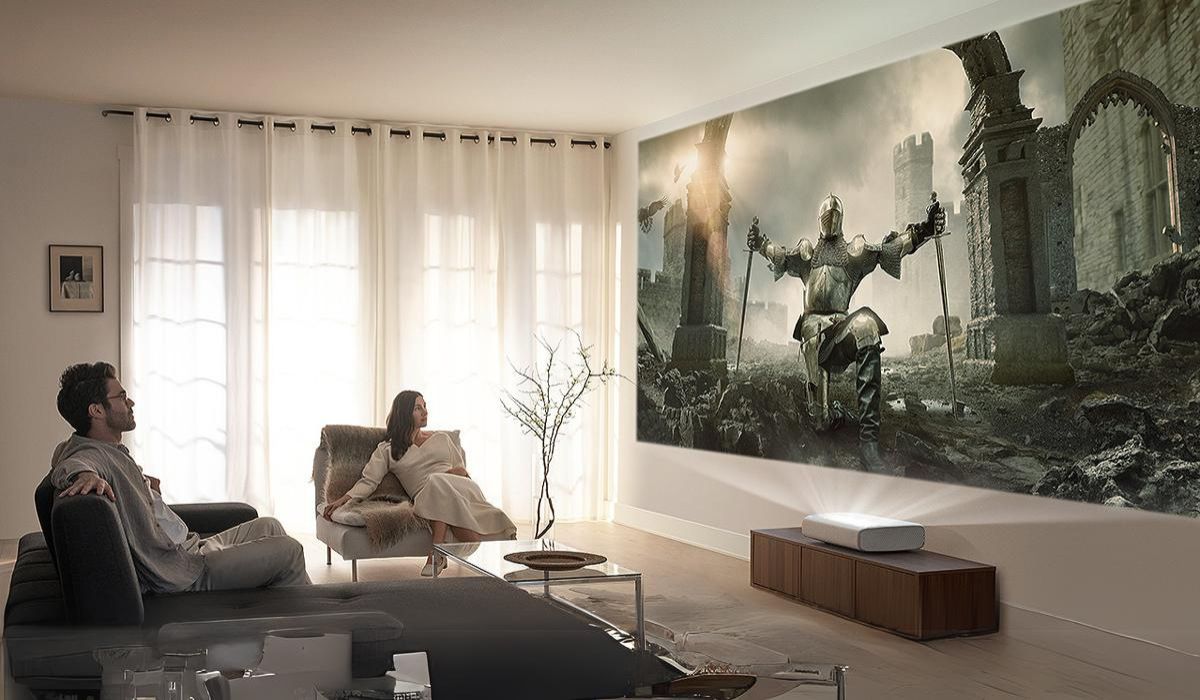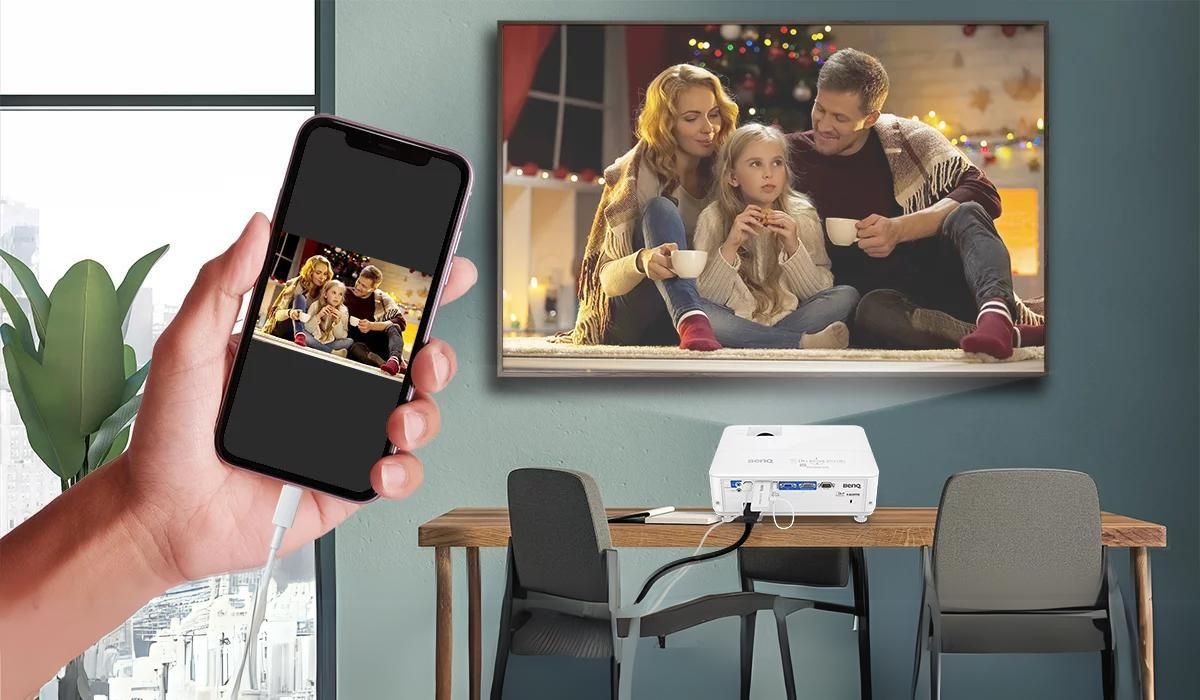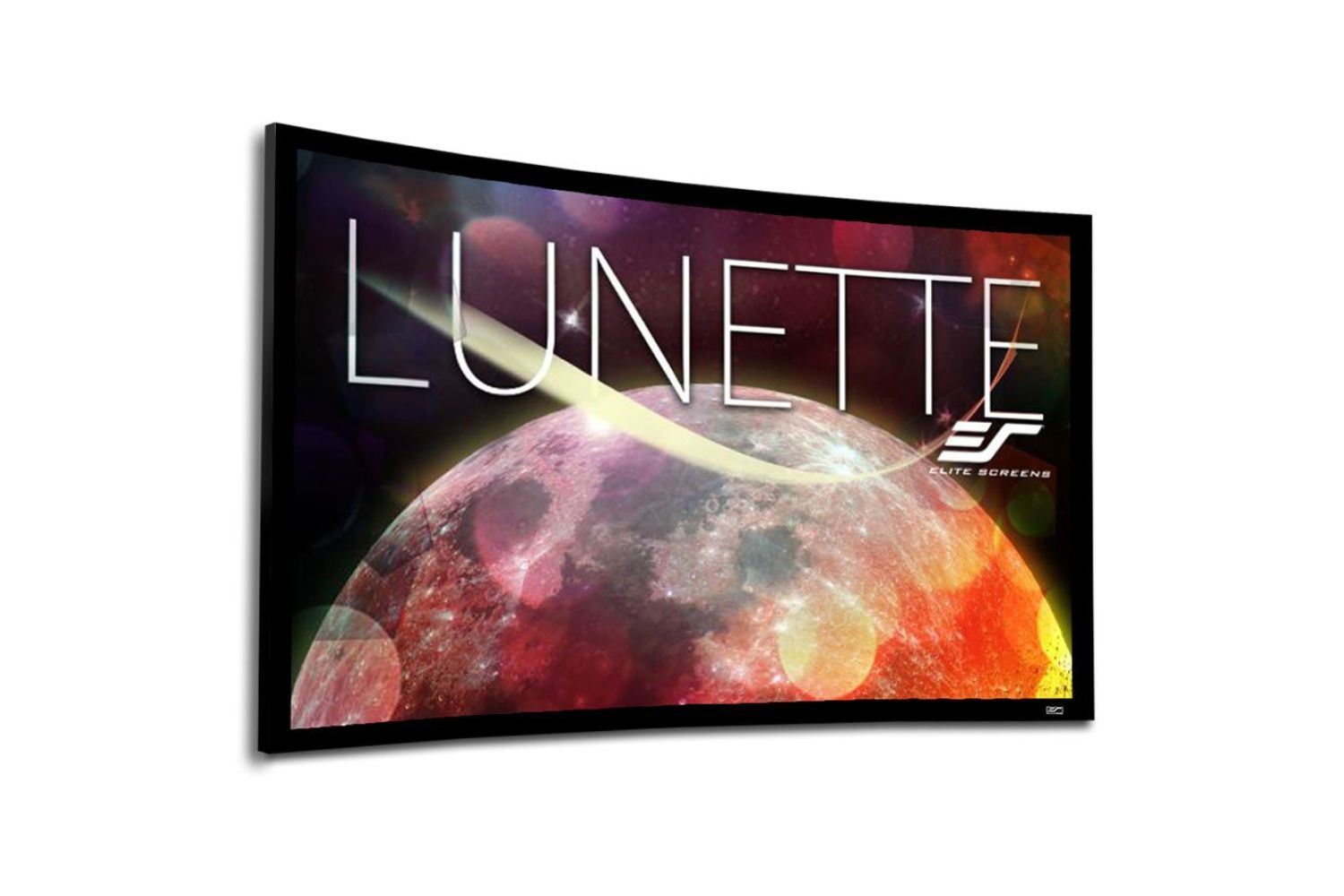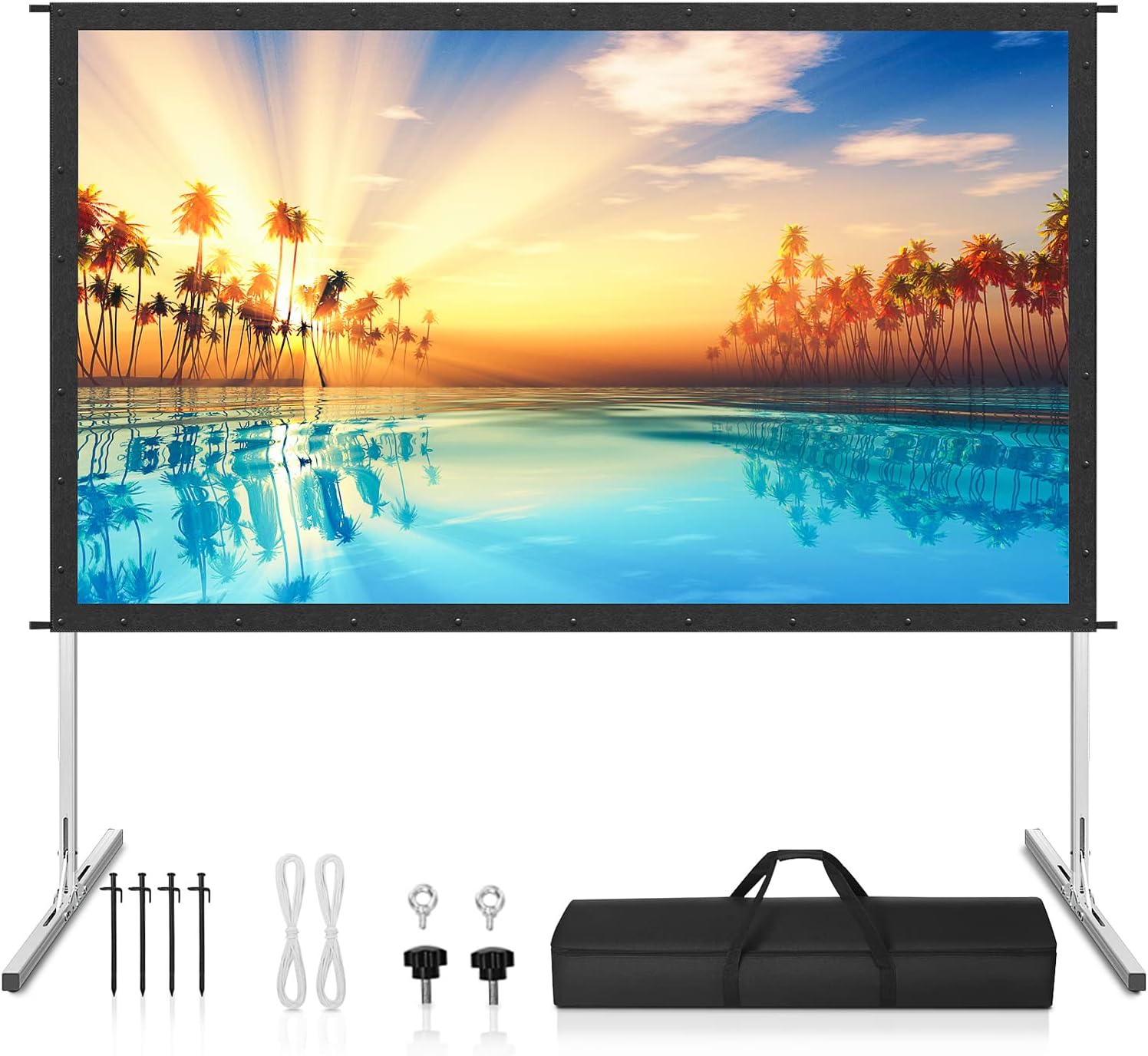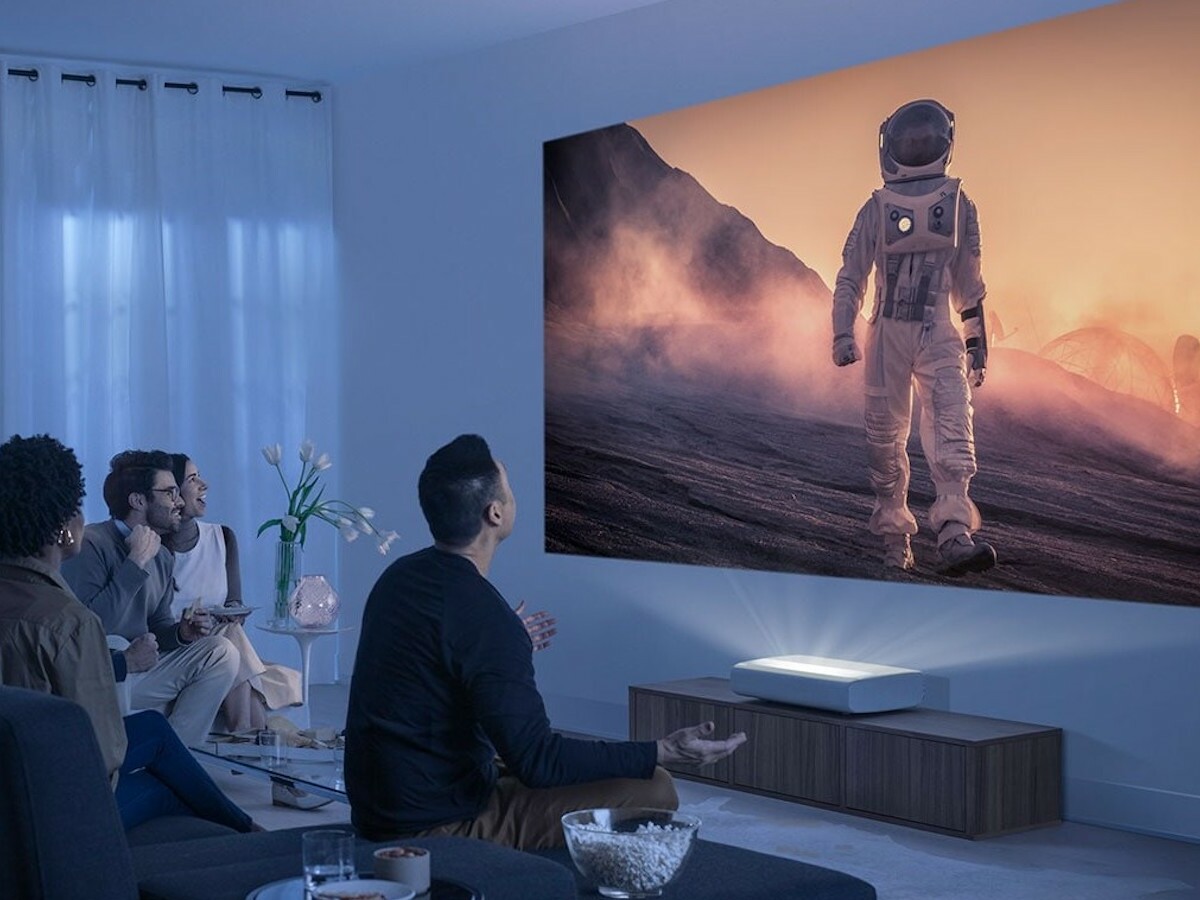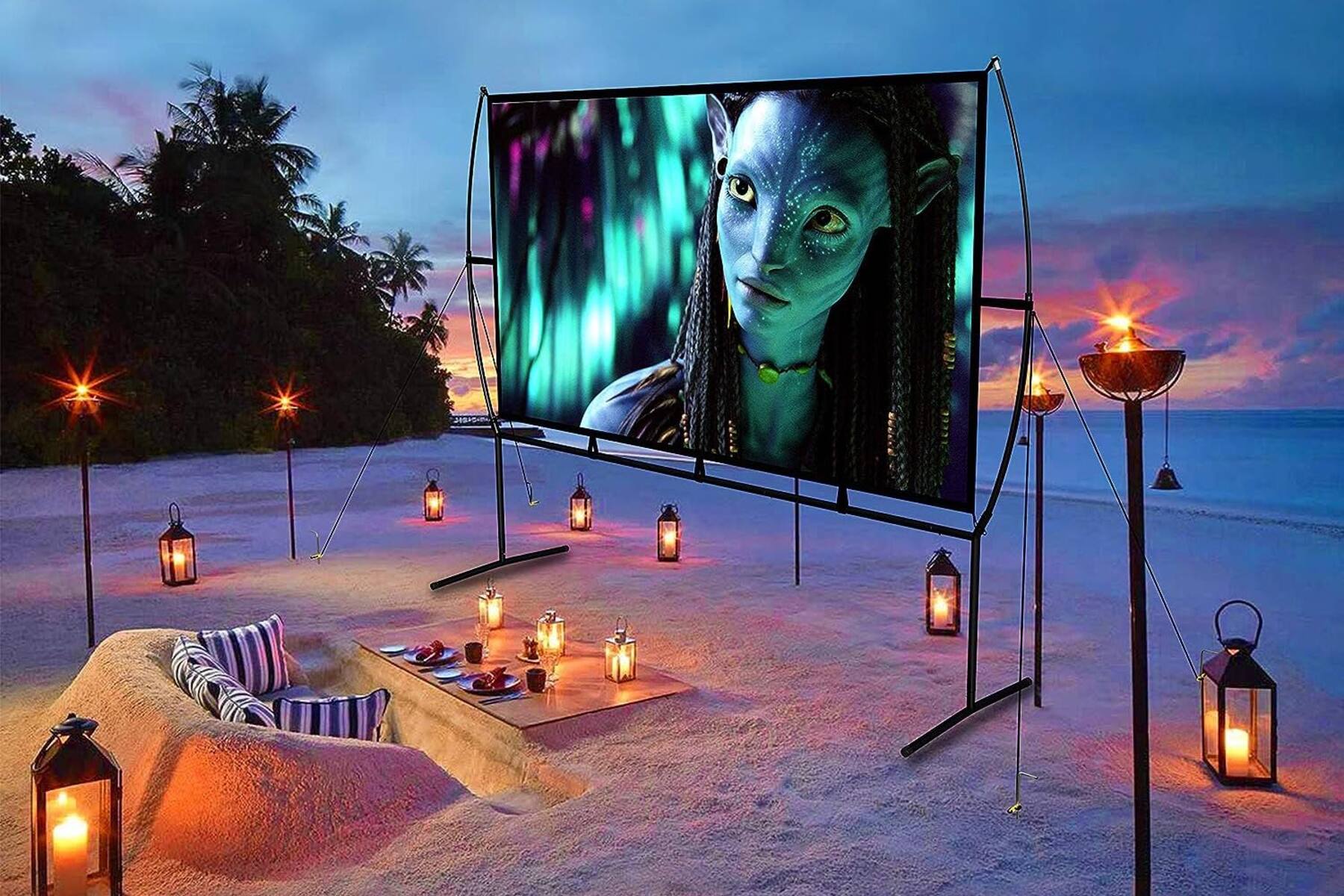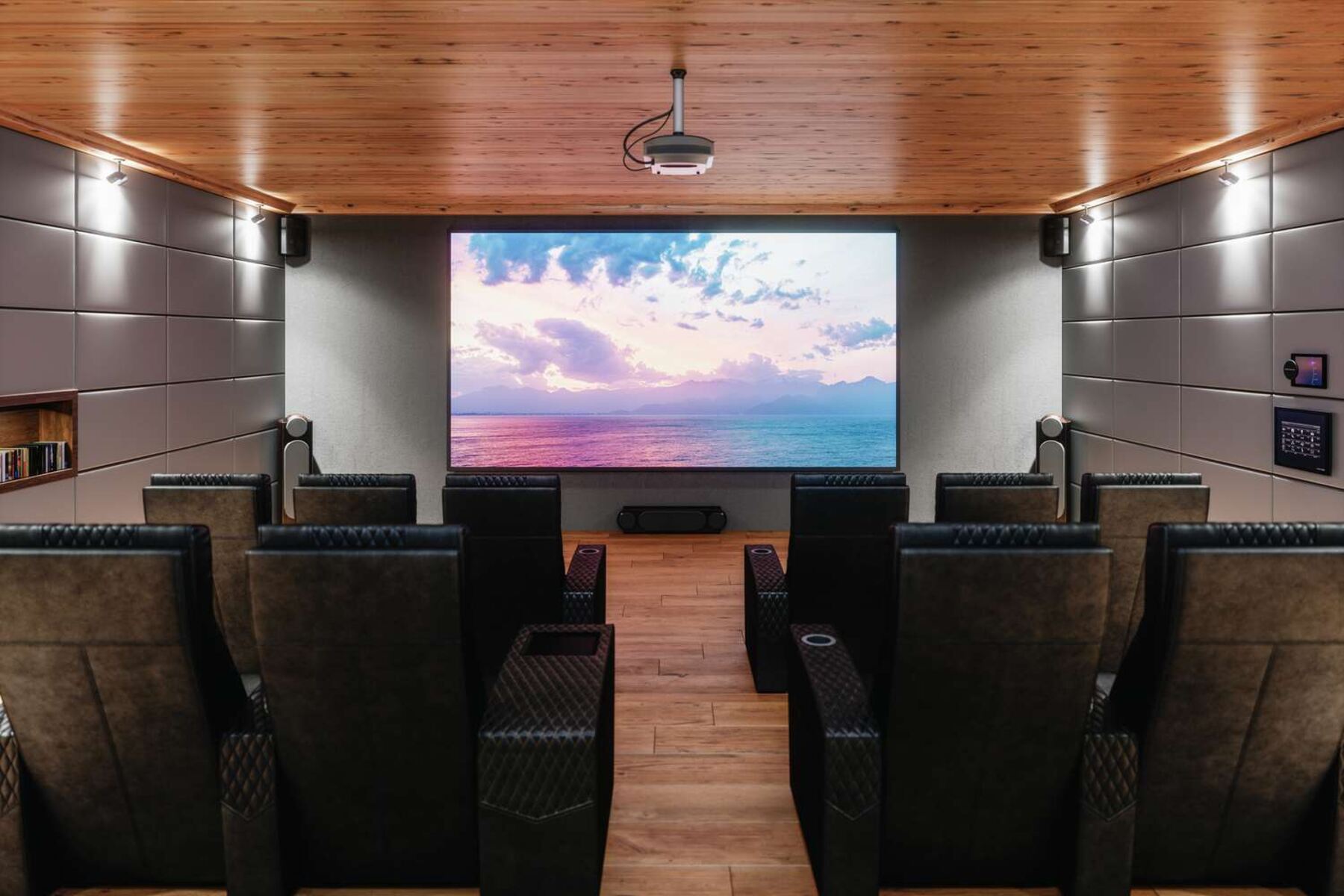Introduction
Welcome to the world of home theater projectors! If you’re looking to transform your living space into a captivating cinematic experience, investing in a high-quality projector is a must. With so many options available in the market, choosing the best projector for your home theater setup can be a daunting task. But fret not, we’re here to help!
When it comes to selecting the perfect projector, there are several factors to consider. From resolution and contrast ratio to brightness and connectivity options, each aspect plays a crucial role in delivering an immersive viewing experience. In this article, we will explore these factors in detail and recommend some of the top projectors currently available.
By understanding your specific needs and preferences, you can narrow down your choices and make an informed decision. Whether you’re a film enthusiast seeking the ultimate picture quality or someone who values a versatile and affordable option, there’s a projector out there that’s perfect for you.
In the following sections, we will delve deeper into the key factors to consider when choosing a home theater projector. We will explore the importance of resolution, contrast ratio, brightness, connectivity options, throw distance and screen size, sound quality, as well as price and value for money.
After discussing these essential factors, we will showcase our top recommendations for home theater projectors. Each projector on our list has been carefully selected based on its performance, features, and overall value. Whether you’re seeking a high-end option that delivers unrivaled picture quality or a budget-friendly choice that doesn’t compromise on performance, you’ll find something that suits your needs.
So, without further ado, let’s dive into the world of home theater projectors and discover the best options available to create your very own movie theater right in the comfort of your own home.
Factors to Consider
When searching for the best projector for your home theater, it’s important to consider several key factors that will greatly impact your viewing experience. By understanding and evaluating these factors, you can make an informed decision and choose a projector that suits your specific needs and preferences.
1. Resolution
Resolution refers to the number of pixels that make up the image displayed by the projector. It greatly affects the clarity and sharpness of the visuals. The most common resolutions for home theater projectors are Full HD (1920×1080 pixels) and 4K Ultra HD (3840×2160 pixels). While Full HD provides a crisp and detailed image, 4K Ultra HD offers even more stunning visuals with four times the pixel density. Consider your budget and the level of visual quality you desire when selecting the resolution.
2. Contrast Ratio
The contrast ratio determines the difference between the brightest and darkest parts of an image. A higher contrast ratio ensures deeper blacks and brighter whites, resulting in a more vibrant and realistic image. Look for projectors with a high contrast ratio to enhance the overall visual experience of your home theater.
3. Brightness
The brightness of a projector is measured in lumens. It is important to choose a projector with sufficient brightness to ensure clear and bright visuals, especially in a room with ambient light. For a dedicated home theater room, a projector with higher lumens may not be necessary. However, if you plan to use the projector in a multi-purpose room or a room with windows, consider opting for a projector with higher brightness levels.
4. Connectivity Options
Consider the various connectivity options offered by the projector. HDMI ports are essential to connect gaming consoles, Blu-ray players, and streaming devices. USB ports can be useful for connecting external storage devices or powering streaming sticks. Additionally, wireless connectivity options such as Wi-Fi and Bluetooth can provide convenient and seamless integration with other devices.
5. Throw Distance and Screen Size
The throw distance is the distance between the projector and the screen. It determines the size of the projected image. Calculate the optimal throw distance and screen size based on the dimensions of your room and the desired viewing experience. Some projectors offer a flexible zoom and lens shift feature, allowing you to adjust the image size and position without moving the projector.
6. Sound Quality
While projectors come equipped with built-in speakers, they may not deliver the desired audio experience for a home theater setup. Consider investing in a separate sound system or connecting the projector to an external audio setup to ensure immersive sound quality that complements the visuals.
7. Price and Value for Money
Set a budget that suits your requirements and look for projectors that offer the best value for money within that range. Consider the overall quality, features, and performance of the projector in relation to its price. Assess customer reviews and expert opinions to gauge the reliability and longevity of the product.
By carefully considering these factors, you can narrow down your options and select a home theater projector that delivers dazzling visuals, immersive sound, and an unparalleled cinematic experience right in the comfort of your own home.
Resolution
Resolution is one of the most important factors to consider when choosing a home theater projector. It determines the level of detail and clarity in the displayed image. There are two main resolutions commonly available in home theater projectors: Full HD (1920×1080 pixels) and 4K Ultra HD (3840×2160 pixels).
Full HD resolution provides a crisp and detailed image, suitable for most home theater setups. The 1920×1080 pixel resolution ensures that you can enjoy your favorite movies and TV shows in stunning clarity.
On the other hand, 4K Ultra HD resolution takes the visual experience to a whole new level. With four times the pixel density of Full HD, 4K projectors deliver incredibly sharp and lifelike images. The 3840×2160 pixel resolution allows for a greater level of detail, ensuring that you can see every nuance and texture in the content you’re watching.
While 4K Ultra HD projectors offer a superior visual experience, they also come with a higher price tag. If you’re a devoted film enthusiast or someone who values the finest picture quality, investing in a 4K projector may be worth it. However, if you’re on a budget or your viewing distance does not require the additional pixel density, a Full HD projector can still provide a fantastic viewing experience.
It’s important to note that the resolution of the projector is also affected by the resolution of the content being played. If you primarily watch Full HD content, a 4K projector will upscale the resolution, but the difference may not be as noticeable. However, if you frequently watch native 4K content, a 4K projector will showcase the content in its full glory.
Ultimately, the resolution you choose depends on your preferences, budget, and the level of visual quality you desire. Both Full HD and 4K Ultra HD projectors have their advantages, and it’s up to you to decide which one best fits your needs.
Contrast Ratio
Contrast ratio is a vital specification to consider when selecting a home theater projector. It determines the difference between the darkest blacks and the brightest whites in an image, resulting in more vibrant and dynamic visuals.
A higher contrast ratio signifies a greater level of differentiation between light and dark areas, providing a more pronounced depth and realism to the image. This is particularly important when watching movies or TV shows with low-light or dark scenes, as it enhances shadow details and ensures that you don’t miss any crucial visual elements.
When it comes to contrast ratio, it’s important to understand the two types: dynamic contrast ratio and native contrast ratio.
The dynamic contrast ratio refers to the ratio between the brightest whites and the darkest blacks that the projector can achieve dynamically, adjusting it in real-time depending on the content being displayed. This can result in impressive contrast levels, especially in scenes with high contrast ratios. However, it’s important to note that dynamic contrast ratios can sometimes be exaggerated by manufacturers and may not accurately represent the true performance of the projector.
On the other hand, native contrast ratio refers to the actual contrast ratio the projector can achieve without any dynamic adjustments. Native contrast ratios are generally more reliable and provide a better indication of the projector’s performance. Look for projectors with a higher native contrast ratio to ensure deeper blacks and more vibrant whites.
It’s worth mentioning that contrast ratio alone is not the sole determinant of image quality. Factors such as ambient light conditions, screen material, and room setup also play a role in the perceived contrast levels. Therefore, it’s important to consider these factors in conjunction with the projector’s contrast ratio to achieve optimal results.
Ultimately, a high contrast ratio adds depth and realism to your home theater experience. It enhances the overall visual quality and allows you to fully immerse yourself in the content you’re watching. When comparing projectors, pay attention to both the dynamic and native contrast ratios to ensure that you select a projector that provides the right balance of bright whites and deep blacks for your viewing pleasure.
Brightness
Brightness is a crucial factor to consider when choosing a home theater projector. It refers to the amount of light emitted by the projector and plays a significant role in delivering clear and vivid visuals.
When selecting a projector, it’s important to consider the brightness level based on the environment in which it will be used. If you have a dedicated home theater room with controlled lighting, a projector with lower brightness levels may be sufficient. In such a setting, there’s minimal ambient light that can interfere with the image quality, allowing the projector to showcase vibrant colors and rich details.
However, if you plan to use the projector in a multipurpose room or a room with windows, it’s important to opt for a projector with higher brightness levels. Lighting conditions impact the perceived brightness of the image, and ambient light can wash out the colors and reduce the overall image quality. By selecting a projector with higher lumens, you ensure that the image remains bright and clear, even in well-lit environments.
When it comes to brightness, it’s essential to strike a balance. While a brighter projector can combat ambient light, extremely high brightness levels may result in image quality degradation, such as washed-out colors and reduced contrast. Therefore, consider the specific needs of your viewing environment and choose a brightness level that suits your requirements.
It’s also important to note that the size of the screen and the throw distance affect the perceived brightness. A larger screen or a longer throw distance can spread the projected light, resulting in a dimmer image. If you plan to use a larger screen or project from a greater distance, selecting a projector with higher brightness levels can help maintain a bright and engaging viewing experience.
Lastly, keep in mind that brightness alone is not the sole determinant of image quality. The projector’s contrast ratio, color accuracy, and overall image processing capabilities also play a significant role. Therefore, it’s important to consider brightness in conjunction with other factors to ensure an optimal viewing experience.
By selecting a projector with the appropriate brightness levels for your viewing environment, you can enjoy stunning visuals that come to life, regardless of lighting conditions. Whether you prefer a dimly lit cinematic atmosphere or a vibrant and versatile viewing experience, choosing the right level of brightness ensures that your home theater projector meets your specific needs.
Connectivity Options
Connectivity options are an important consideration when choosing a home theater projector, as they determine how you can connect and integrate various devices with your projector. Having versatile connectivity options allows for seamless access to your favorite content and enhances the overall functionality of your home theater setup.
The most common connectivity option for projectors is HDMI (High-Definition Multimedia Interface). HDMI ports enable you to connect devices such as Blu-ray players, gaming consoles, streaming devices, and laptops, ensuring high-quality audio and video transmission. Look for projectors with multiple HDMI ports to accommodate all your devices without the need for frequent cable swapping.
In addition to HDMI, USB ports offer convenient connectivity options. USB ports allow you to connect external storage devices, such as USB flash drives or hard drives, to access and play media files directly from the projector. Some projectors also support USB power output, which can be useful for powering streaming sticks or other devices.
Wireless connectivity options have become increasingly popular in recent years. Wi-Fi-enabled projectors allow you to wirelessly connect your projector to your home network, enabling easy access to streaming services, online content, and media stored on networked devices. Bluetooth connectivity is another feature worth considering, as it allows you to connect wireless speakers or headphones for enhanced audio experiences.
In addition to these primary connectivity options, other ports and features can enhance the versatility of your home theater setup. For example, VGA and composite video inputs allow you to connect older devices or legacy equipment. Audio-out ports enable you to connect the projector to external audio systems or speakers for improved sound quality.
When considering connectivity options, think about your specific needs and the devices you plan to connect to the projector. Ensure that the projector offers the right ports and wireless capabilities to accommodate your requirements. It’s also a good idea to check the compatibility of the projector with your existing devices and verify if any additional adapters or cables may be required.
By selecting a projector with a wide range of connectivity options, you can enjoy seamless integration with various devices, access a variety of content sources, and maximize the potential of your home theater setup. Whether you prefer wired connections for enhanced stability or wireless convenience for a clutter-free environment, having the right connectivity options enriches your home theater experience.
Throw Distance and Screen Size
Throw distance and screen size are crucial considerations when choosing a home theater projector, as they determine the optimal placement of the projector and the size of the projected image. Understanding these factors ensures that you achieve the desired viewing experience and make the most of your projector.
Throw distance refers to the distance between the projector and the screen. It plays a significant role in determining the size of the projected image. Different projectors have different throw ratios, which determine how far the projector needs to be placed from the screen to achieve a specific image size.
It’s important to measure the dimensions of your room and consider the available space when determining the optimal throw distance. Projectors with a shorter throw distance are suitable for smaller rooms, while those with a longer throw distance are ideal for larger rooms or setups where the projector needs to be placed farther away from the screen.
Screen size is another important factor to consider. The screen size should be compatible with the size of the room and the intended viewing distance. Too large of a screen in a small room may lead to a distorted image, while a small screen in a large room may result in a less immersive experience.
Calculating the optimal screen size and throw distance involves considering the projector’s throw ratio, the desired image size, and the layout of the room. Some projectors offer a zoom feature, which allows you to adjust the image size without moving the projector. This can be convenient if you need flexibility in adjusting the screen size based on your preferences or the type of content you’re watching.
It’s worth noting that the throw distance and screen size also impact the brightness and overall image quality. A larger screen or a longer throw distance disperses the projected light, potentially resulting in a dimmer image. Therefore, it’s essential to consider the brightness levels of the projector in relation to the desired screen size and throw distance to ensure optimal viewing conditions.
By understanding the throw distance and screen size requirements, you can determine the appropriate placement for your projector and select a screen size that offers an immersive and enjoyable viewing experience. Taking the room dimensions into account and considering the projector’s specifications will help you achieve the desired visual impact within the available space.
Sound Quality
While projectors often come with built-in speakers, the sound quality they produce may not meet the standards of a true home theater setup. Considering the sound quality and ensuring an immersive audio experience is an essential factor when choosing a home theater projector.
When evaluating the sound quality of a projector, it’s important to consider factors such as audio output power, frequency response, and audio enhancement technologies. Higher audio output power generally results in louder and more impactful sound. Look for projectors with higher wattage ratings to ensure a richer audio experience that fills your room.
Frequency response refers to the range of audio frequencies that a projector can reproduce. A wider frequency response allows for more accurate reproduction of low and high-frequency sounds, delivering a more dynamic and detailed audio experience. Look for projectors with a broad frequency response range to capture the nuances of dialogue, music, and sound effects.
To enhance the audio quality, some projectors may come equipped with audio enhancement technologies such as equalizers, surround sound processing, or even built-in Dolby decoding. These features can significantly improve the overall sound performance and create a more immersive home theater experience. Evaluate the audio features and enhancements offered by the projector to ensure a satisfying audio experience.
It’s important to note that for the ultimate sound quality, it is recommended to invest in a separate sound system or connect the projector to an external audio setup. This can be achieved through various methods such as connecting the projector to an AV receiver, soundbar, or a dedicated home theater audio system. These setups offer superior sound quality, better channel separation, and the ability to create a surround sound experience.
When considering the audio setup, ensure that the projector has appropriate audio output options, such as HDMI ARC or optical output, to connect with external audio devices. This allows for seamless integration and synchronization between the projector and the audio system for an immersive home theater experience.
By prioritizing sound quality and considering the audio features and connectivity options, you can ensure that your home theater projector delivers an exceptional audio experience. Whether you opt for utilizing the projector’s built-in speakers or connecting it to an external audio system, enjoying high-quality sound is essential to creating a fully immersive cinematic experience right in your own home.
Price and Value for Money
Price is an important consideration when choosing a home theater projector, as it determines the affordability and overall value of the product. While it’s tempting to focus solely on the price tag, it’s crucial to consider the value for money that the projector offers.
When evaluating the price, keep in mind that higher-priced projectors often come with additional features, better performance, and advanced technologies. These projectors are typically suitable for those seeking the best possible picture quality or specific features like HDR support, wide color gamut, or motorized lens shift, among others.
On the other hand, more affordable projectors may provide a great value for money, especially for those on a tight budget or with more modest requirements. These projectors can still offer decent image quality, reliable performance, and essential features, making them a practical choice for casual viewing or smaller home theater setups.
It’s crucial to assess the overall quality and performance of the projector in relation to its price. Consider factors such as resolution, contrast ratio, brightness, connectivity options, and sound quality. Read customer reviews, expert opinions, and compare different models to gauge the reliability and longevity of the product before making a decision.
It’s worth noting that the value for money is not solely determined by the price and features of the projector. Consider the specific needs and preferences of your home theater setup. A projector that meets your requirements and provides a highly satisfying viewing experience can offer long-term value even if it comes at a higher initial cost.
When making a purchasing decision, carefully weigh the features, performance, and price of the projector. Analyze the projected lifespan of the technology and consider future upgrade possibilities. Additionally, take into account the warranty and customer support offered by the manufacturer to ensure peace of mind with your investment.
Ultimately, strike a balance between your budget and the features that are most important to you. A higher-priced projector may offer advanced capabilities and premium image quality, while a more affordable option may still provide a satisfying viewing experience within the limitations of its price range. Determine your priorities, consider the value for money, and select a home theater projector that best fits your needs and budget.
Top Projectors for Home Theater
Now that we have explored the key factors to consider when choosing a home theater projector, let’s take a look at some of the top projectors currently available. These projectors have been selected based on their performance, picture quality, features, and overall value.
1. Sony VPL-VW295ES
The Sony VPL-VW295ES is a high-end 4K projector that delivers stunning visuals with its native 4K resolution and HDR support. It boasts a high contrast ratio, excellent color accuracy, and a wide color gamut. With its advanced image processing and flexible lens adjustment, this projector offers superb picture quality and immersive cinematic experience.
2. Epson Home Cinema 5050UB
The Epson Home Cinema 5050UB is another top-tier option that offers remarkable image quality with its 4K PRO-UHD resolution and HDR capabilities. It delivers excellent color accuracy, deep blacks, and vibrant colors. With its high brightness levels, impressive contrast ratio, and motorized lens adjustment, this projector is perfect for those seeking a true cinematic experience.
3. BenQ HT3550
For those on a more moderate budget, the BenQ HT3550 is an exceptional choice. It features 4K resolution, HDR10 support, and a wide color gamut, delivering impressive image quality at an affordable price. With its low input lag and flexible zoom and lens shift, this projector is ideal for both movies and gaming.
4. Optoma UHD50X
The Optoma UHD50X is a versatile 4K projector suitable for both dedicated home theater setups and multi-purpose rooms. With its high brightness levels, excellent color reproduction, and low input lag, this projector offers a fantastic gaming and movie-watching experience. It also boasts a long lamp life and a competitive price.
5. LG HU85LA
For those looking for a unique home theater setup, the LG HU85LA is a short-throw laser projector that offers a stunning 4K Ultra HD image with HDR10 support. With its ultra-short throw distance and compact design, it can be placed just inches away from the screen, making it perfect for small spaces. It also features WebOS smart TV platform, wireless connectivity, and built-in speakers for a streamlined entertainment experience.
These are just a few examples of the top projectors available for home theater use. Each of these projectors offers excellent picture quality, advanced features, and value for money. Whether you’re seeking the utmost picture clarity, budget-friendly options, or unique features like short-throw distance or wireless connectivity, there’s a projector on this list that will suit your specific needs and elevate your home theater experience.
Sony VPL-VW295ES
The Sony VPL-VW295ES is a top-tier home theater projector that offers unparalleled picture quality and performance. As a native 4K projector with HDR support, it delivers stunning visuals with exceptional detail, clarity, and color accuracy.
This projector boasts a high contrast ratio, which results in deep blacks and vibrant whites, enhancing the overall image quality and creating a more immersive cinematic experience. Additionally, the wide color gamut ensures rich and accurate color reproduction, allowing you to enjoy movies, TV shows, and games in their truest form.
The Sony VPL-VW295ES utilizes advanced image processing technology, including Sony’s proprietary Reality Creation, which enhances the clarity and sharpness of the image. This feature upscales lower resolution content to near-4K quality, ensuring that even non-4K content looks impressive on the big screen.
Flexibility is another notable feature of this projector. It offers a wide lens shift range, allowing you to adjust the position of the image vertically and horizontally without moving the projector itself. This feature simplifies installation and ensures that you can achieve the perfect alignment and projection size for your home theater setup.
In terms of connectivity, the VPL-VW295ES features multiple HDMI ports and supports HDCP 2.2, enabling seamless connectivity with a variety of devices including Blu-ray players, gaming consoles, and media streamers. It also offers RS-232C control, LAN connectivity, and a USB port for firmware updates.
When it comes to sound quality, this projector provides basic built-in speakers, but for a complete home theater experience, it is highly recommended to connect an external audio system to fully immerse yourself in the audio aspect of your films and TV shows.
As expected with a premium projector, the Sony VPL-VW295ES comes with a higher price point. However, if you’re a dedicated movie enthusiast looking for the best 4K picture quality, precise color accuracy, and a versatile configuration, this projector offers exceptional value for your investment.
In summary, the Sony VPL-VW295ES is a top-notch home theater projector that delivers breathtaking visuals and a truly immersive cinematic experience. Its native 4K resolution, HDR support, high contrast ratio, and advanced image processing technologies ensure outstanding picture quality. With its flexible installation options and connectivity features, this projector is suitable for both dedicated home theaters and multi-purpose rooms. If you’re looking to take your home theater to new heights, the Sony VPL-VW295ES is an excellent choice.
Epson Home Cinema 5050UB
The Epson Home Cinema 5050UB is a high-performance home theater projector that offers exceptional image quality, making it a popular choice among movie enthusiasts. This projector features native 4K PRO-UHD resolution and supports HDR content, resulting in stunning visuals with incredible detail and color accuracy.
One of the standout features of the Home Cinema 5050UB is its impressive contrast ratio. With Epson’s advanced 3LCD technology and a high dynamic contrast ratio of up to 1,000,000:1, this projector delivers deep blacks and bright whites, enhancing the overall image depth and providing an immersive cinematic experience.
Thanks to its exceptional brightness levels, rated at 2,600 lumens, the 5050UB can preserve outstanding image quality even in well-lit environments or with larger screen sizes. Whether you’re watching a movie during the day or in a room with ambient light, this projector maintains excellent color saturation and contrast for vibrant and lifelike visuals.
In terms of installation flexibility, the Home Cinema 5050UB offers motorized lens shift, zoom, and focus capabilities. This allows for easy adjustments to achieve the desired image size and position, giving you the freedom to place the projector in various locations within your home theater room.
The 5050UB also supports various connectivity options, including HDMI 2.0 inputs with HDCP 2.2 support, allowing you to connect multiple devices such as Blu-ray players, gaming consoles, and streaming devices. It also features a built-in 3D transmitter, making it compatible with 3D content for an enhanced viewing experience.
Sound-wise, the Home Cinema 5050UB comes with basic built-in speakers, but for optimal audio performance, it is recommended to connect an external audio system to fully immerse yourself in the cinematic sound experience.
While the Epson Home Cinema 5050UB comes with a higher price tag compared to entry-level projectors, its exceptional image quality, contrast ratio, brightness, and installation flexibility make it a worthwhile investment for serious home theater enthusiasts who crave the best possible cinematic experience.
In summary, the Epson Home Cinema 5050UB is a top-tier home theater projector that delivers outstanding picture quality, with native 4K PRO-UHD resolution and HDR support. Its impressive contrast ratio, brightness capabilities, and flexible installation options make it a standout choice among home theater enthusiasts. If you’re looking for a projector that offers true cinematic visuals and a remarkable viewing experience, the Epson Home Cinema 5050UB is a fantastic option to consider.
BenQ HT3550
The BenQ HT3550 is a highly regarded home theater projector that offers exceptional image quality and features at an affordable price point. With its 4K UHD resolution and HDR support, this projector delivers sharp and lifelike visuals that enhance your movie-watching experience.
Equipped with BenQ’s CinematicColor technology, the HT3550 ensures accurate color reproduction with its wide color gamut. The combination of high visual clarity and vibrant, true-to-life colors creates stunning imagery that truly immerses you in your favorite films.
The HT3550 features a high contrast ratio of 30,000:1, providing deep blacks and bright whites for enhanced image depth. This contrast ratio contributes to an excellent overall picture quality, ensuring the details in dark scenes are well-defined and the highlights pop with brilliance.
With a brightness rating of 2,000 lumens, the HT3550 is suitable for a range of room environments. It offers sufficient brightness for well-lit spaces and maintains balanced image quality without compromising color accuracy or contrast ratio.
Installation flexibility is another standout aspect of the HT3550. It features a 1.3x zoom lens and lens shift capabilities, allowing you to adjust the position and size of the projected image without the need to move the projector itself. This versatility simplifies the installation process and ensures that you can achieve the desired screen size and position effortlessly.
In terms of connectivity, the HT3550 offers several options, including two HDMI ports with HDCP 2.2 support. This allows you to connect various devices such as Blu-ray players, gaming consoles, and media streamers. Additionally, it provides a USB port for firmware updates and other multimedia playback options.
While the HT3550 has built-in speakers, it’s recommended to connect external speakers or a sound system to fully appreciate the immersive audio experience that complements the exceptional visual quality.
The BenQ HT3550 strikes a great balance between performance and affordability, making it an ideal option for those seeking a reliable home theater projector within a more moderate budget. With its impressive 4K UHD resolution, CinematicColor technology, and versatile installation options, it delivers a visually stunning cinematic experience.
In summary, the BenQ HT3550 is a standout home theater projector that offers impressive image quality, accurate color reproduction, and installation flexibility. With its affordability and advanced features, it provides an outstanding value proposition for movie enthusiasts and home theater setups.
Optoma UHD50X
The Optoma UHD50X is a versatile and feature-rich 4K home theater projector that offers impressive performance at an affordable price. With its excellent picture quality, low input lag, and gaming-oriented features, it is a popular choice among gamers and movie enthusiasts alike.
Featuring native 4K UHD resolution and HDR10 support, the UHD50X delivers stunning visuals with exceptional clarity and detail. The high pixel density ensures that every image is sharp and lifelike, making it a great option for both movies and gaming.
One of the distinguishing features of the UHD50X is its high brightness rating of 3,400 lumens. This allows the projector to maintain vibrant and well-saturated colors even in rooms with some ambient light or larger screen sizes. It ensures that you can enjoy a dynamic cinematic experience regardless of the lighting conditions in your viewing environment.
Another highlight of the UHD50X is its low input lag, making it an ideal choice for gamers. With a response time as low as 16ms, gaming on this projector offers smooth and lag-free performance, allowing you to fully immerse yourself in fast-paced gameplay.
The UHD50X also features dynamic black technology, which enhances the contrast ratio by dynamically adjusting the lamp output. This results in deeper blacks and improved overall image quality, adding depth and richness to your movie and gaming experiences.
In terms of installation flexibility, the UHD50X offers a 1.3x zoom range, allowing you to adjust the projection size without having to move the projector. It also provides vertical lens shift, enabling easy alignment with the screen and accommodating various room setups.
The connectivity options of the UHD50X include two HDMI 2.0 ports with HDCP 2.2 support, enabling seamless connectivity with Blu-ray players, gaming consoles, and other HDMI devices. It also offers a USB power output, which allows you to power external devices such as streaming sticks without the need for additional power adapters.
While the UHD50X has built-in speakers, connecting external speakers or a sound system is recommended for a more immersive audio experience that complements the impressive visuals.
With its impressive features, affordable price, and gamer-friendly performance, the Optoma UHD50X is a superb choice for both movie enthusiasts and gamers. It delivers stunning 4K visuals, vibrant colors, low input lag, and versatile installation options, making it a highly desirable projector for home theater setups.
In summary, the Optoma UHD50X offers excellent picture quality, low input lag, and outstanding value for money. Whether you’re watching movies or gaming, this projector delivers an immersive and visually captivating experience that will elevate your home theater or gaming setup.
LG HU85LA
The LG HU85LA is an innovative and unique home theater projector that offers a truly immersive viewing experience. As a short-throw laser projector, it can be placed just inches away from the screen, making it perfect for small spaces and minimizing the need for extensive room modifications.
Featuring 4K Ultra HD resolution and HDR support, the HU85LA delivers stunning visuals with exceptional clarity and detail. The high pixel density ensures sharp images, while the HDR capability enhances the dynamic range, offering vivid colors and improved contrast for a more lifelike viewing experience.
Thanks to its laser light source, the HU85LA provides outstanding brightness levels of up to 2,700 lumens. This ensures vibrant and well-defined images, even in well-lit environments. The laser technology also offers consistent brightness over a long lifespan, eliminating the need for frequent bulb replacements.
Installation flexibility is another notable feature of the HU85LA. With its ultra-short throw lens, you can place the projector on a TV stand or directly on the floor, saving space and simplifying the setup process. It can project a large image size without the need to mount it on the ceiling and is suitable for a variety of screen materials.
In terms of connectivity, the HU85LA offers a comprehensive range of options. It features four HDMI inputs, including an HDMI ARC for audio output and easy integration with other devices. It also includes USB ports, Ethernet connectivity, and wireless support, allowing for seamless access to content from various sources.
Additionally, the HU85LA comes with LG’s webOS platform, providing a user-friendly interface and access to popular streaming services and applications. With built-in speakers and support for Bluetooth audio output, you can enjoy immersive sound without the need for external speakers.
The LG HU85LA combines cutting-edge technology, modern design, and convenience to deliver an exceptional home theater experience. Whether you have limited space or crave a sleek, all-in-one solution, this short-throw laser projector offers the utmost flexibility and performance.
In summary, the LG HU85LA is a remarkable short-throw laser projector that provides 4K Ultra HD resolution, HDR support, and superior installation flexibility. Its ultra-short throw capability, high brightness, and comprehensive connectivity options make it an ideal choice for those seeking a unique and immersive home theater setup.
Conclusion
Choosing the best projector for your home theater is an important decision that can greatly enhance your cinematic experience. By considering factors such as resolution, contrast ratio, brightness, connectivity options, throw distance, screen size, sound quality, and price, you can select a projector that meets your specific needs and preferences.
Whether you’re a dedicated movie enthusiast, a passionate gamer, or simply looking to create a cozy home theater space, there are a variety of projectors available to suit every budget and requirement.
The Sony VPL-VW295ES offers unparalleled picture quality and performance with its native 4K resolution and HDR support. With its exceptional contrast ratio, color accuracy, and installation flexibility, it delivers a truly immersive viewing experience.
For those seeking a high-quality projector at a more affordable price point, the Epson Home Cinema 5050UB is an excellent choice. Its 4K PRO-UHD resolution, impressive contrast ratio, and flexible installation options ensure vivid visuals and cinematic impact.
The BenQ HT3550 provides impressive image quality and accurate color reproduction, making it a great option for both movies and gaming. With its affordability and versatility, it offers a compelling value proposition for home theater enthusiasts.
The Optoma UHD50X caters to gamers with its low input lag and impressive performance. Its 4K resolution, high brightness levels, and installation flexibility make it an attractive choice for both movies and gaming.
For those who require a unique and space-saving setup, the LG HU85LA, with its short-throw laser technology and sleek design, allows for hassle-free installation and exceptional visual quality.
Ultimately, the best projector for your home theater setup depends on your specific needs, preferences, and budget. By considering the key factors and exploring the different options available, you can find a projector that delivers outstanding picture quality, immersive sound, and an unparalleled cinematic experience right in the comfort of your own home.







